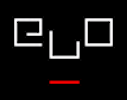Your cart is currently empty!
2008
-
MITH
Made possible by a major Challenge Grant from the National Endowment for the Humanities, the Maryland Institute for Technology in the Humanities (MITH) is a collaboration among the University of… Read more.
-
Library of Congress
During the trial year 2008, the Electronic Literature Organization is collaborating with the Library of Congress in the selection, archiving, and preservation of several hundred web addresses featuring works of… Read more.
-
Turbulence
Founded in 1996, Turbulence (http://turbulence.org) has commissioned over 150 networked art projects and, since 2004, has chronicled emerging network practice via its Networked Performance blog (http://turbulence.org/blog). Turbulence co-presented “Re-Writing” with… Read more.
-
Litnet
“Literature on the net/Net Literature” (Litnet) is a subproject of the Cultural Studies Research Centre “Media Upheavals” at the University of Siegen, Germany. The Research Centre examines the prerequisites and… Read more.
-
Electronic Book Review
Combining elements of graphic design, database programming, and scholarly editing, ebr (www.electronicbookreview.com) has been in continuous publication since 1994. A journal of critical writing produced and published by writers for… Read more.
-
“Second Person” on the electronic book review
Following their game plan (or walkthrough) for First Person, Pat Harrigan and Noah Wardrip-Fruin have brought their anthology Second Person: Role-Playing and Story in Games and Playable Media to the… Read more.
-
Blog Comments and Peer Review Go Head to Head to See Which Makes a Book Better
Check out The Chronicle of Higher Education‘s coverage of ELO board member Noah Wardrip-Fruin’s latest project. ___________________________________ Tuesday, January 22, 2008 Blog Comments and Peer Review Go Head to Head… Read more.
